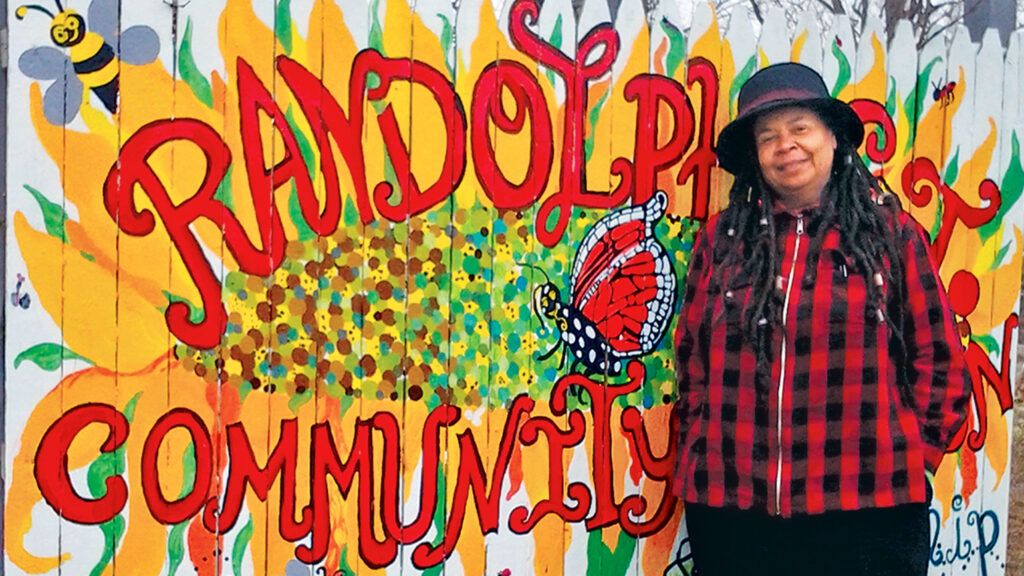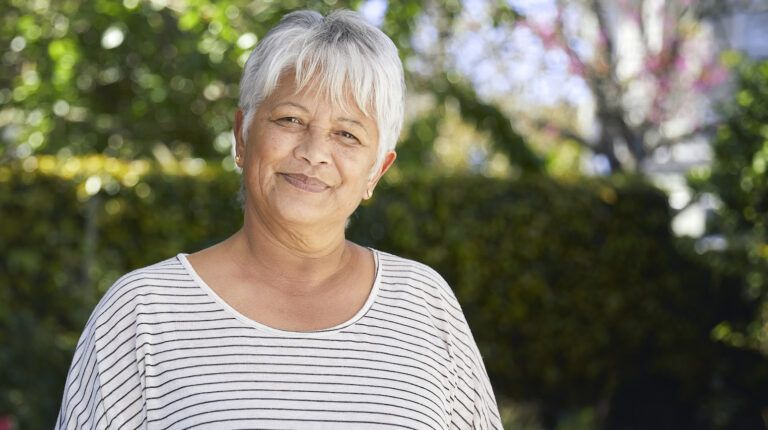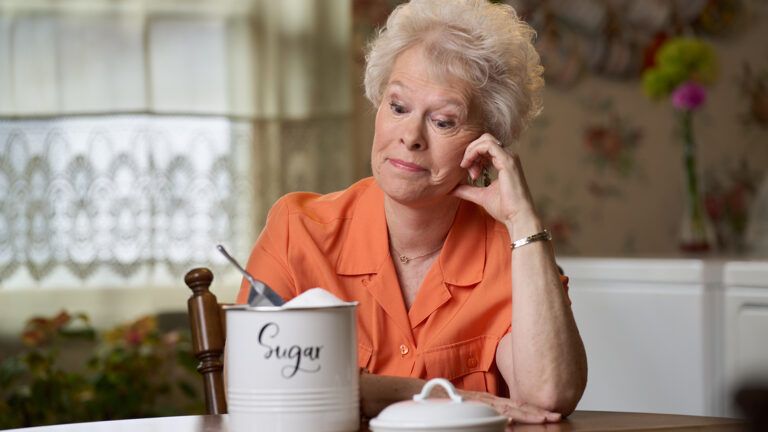Most of us take fresh vegetables for granted. I did. Whenever I wanted to, I’d drive to the grocery store and load my cart with broccoli, asparagus, zucchini and lettuce. For me, a vegetarian, that produce section was my favorite.
When I moved to Champaign, Illinois, to open a dress shop, I figured that’s how most everyone bought their groceries, even in the poorer parts of town. If someone had told me my neighborhood was a food desert, an area where fresh, healthy foods are not available, I would have thought they just needed directions to the supermarket.
My shop was downtown, on a footpath that ran between a middle school and my church. My focus was on improving my business, so I could donate more to my church’s ministries. I thought that was the best way for me to live out my faith.
BROWSE OUR BOOKS ON CHRISTIAN LIVING
I’d grown up in Chicago, raised by my parents to be self-sufficient. They had eight other kids and ran their own businesses from our home. Everyone pitched in. Mom taught me to sew. By the time I was nine, I was sewing Barbie clothes and selling them on the school playground.
In my thirties, I divorced, and returned with my daughter to the Chicago area. In my forties, I left a job in restaurant management and expanded my part-time home-based sewing business to full-time. Then I felt I was ready for a commercial space.
My sister in Champaign found the perfect spot. I opened my shop, Motherland Fashion Design, specializing in clothing made from African fabrics. It had a big display window. People took notice and it did well. I felt blessed.
One afternoon, a girl came into the shop and asked for a drink. She’d spied my water cooler through the window on her way home from the middle school. I was happy to oblige. The next day she stopped by again, with a friend.
Soon half a dozen kids were coming by nearly every day. I loved their energy, how curious they were about a loom I had, about sewing. I made space in the back of the shop so they could work on their homework. The girls asked if they could dress the mannequins in the display window. Why not? It wasn’t my favorite task.
I helped them with their schoolwork. I taught them how to warp the loom, using the math formulas they were learning in school. I told them stories about our African heritage. We even put on fashion shows. I called the group the Culture Club.
They needed more than water after school. I gave them healthy snacks. PB and J sandwiches, oranges and apples. One day I put out a bowl of fresh sugar snap peas.
READ MORE: HOW VOLUNTEERING ADDS LIFE TO YOUR YEARS
“What are those?” a girl asked. The kids stared at the bowl as if it was full of scorpions.
“Haven’t you ever eaten fresh peas before?” I said. I showed them how to open the shell. “Here, try them.”
The girl wrinkled her nose. “Peas come out of a can.”
“Okay,” I said. “But where do they come from before that?”
The kids exchanged glances. “The grocery store?”
I persuaded them to eat just one pea each. Seconds later, the bowl was empty.
I wanted the kids to know where vegetables really came from. Their parents let me take them to the grocery store. That’s when I discovered that some of them had never been there before. Their families didn’t own cars. Buses didn’t go there from our neighborhood. For groceries they walked to a gas-station convenience store. Slim pickings there.
I asked for the produce manager. “Can you show us where you make the peas?”
He looked puzzled. “Ma’am, we just sell them,” he said. “They’re grown on a farm, then another company packages them.”
The kids and I checked out the produce section. But I knew I couldn’t leave the lesson there. These kids needed to understand how fresh vegetables are grown. There was just one problem. I was city born and raised. Planting a garden? I didn’t know the first thing about it.
Still, I’d seen containers for growing sprouts. I bought some, along with packets of alfalfa, bean and radish seeds. We followed the instructions and in days we had our first harvest. We ate the sprouts atop toasted baguettes with garlic butter. The kids loved it.
“It’s like free food!” they exclaimed.
I bought more veggies for afterschool snacks. I drove families to the grocery store. When I was a child, anytime I complained about something unfair, my mother would say, “What are you doing?” It felt good, doing something to make a difference. Even something small.
In 2003, I learned that a graduate student at the University of Illinois was starting a community garden in my neighborhood as a research project—eight 16-foot-by-16-foot beds on Champaign Unit 4 School District property.
I still didn’t know anything about gardening. I wasn’t sure I wanted to give up much more of my sewing time. But I had to try for the kids. I called and got one of the garden beds. Then I went to garage sales and bought shovels, hoes and stakes. For the younger children I got beach buckets and toy shovels.
The garden was near my church, and my pastor agreed to let us store our tools there. At a pawnshop I found a golf bag with wheels, perfect for hauling our equipment.
That first year we grew 16 tomato and jalapeño-pepper plants from seed. When the grad student graduated, a master gardener became steward of the garden. She showed us how to plant, mulch, water and care for our bed. Daily, we trooped down to tend our garden. When green shoots emerged, we were thrilled. However, they didn’t look like the photos on the seed packets.
I found a book at the library called Edible Plants of the Midwest. That’s how we learned that the dandelion greens and lamb’s-quarters we’d thought were weeds were edible. We sautéed them in olive oil and garlic. Yum! The kids couldn’t wait for more “weeds” to grow.
One morning, from across the garden bed, I heard a scream: “It’s a pepper! We grew a real pepper!”
The kids and I formed a conga line and did a victory dance around the garden. With a tomato from the grocery (our plants hadn’t produced any yet), we made salsa. One bite and it was clear this was no ordinary pepper. There was something magical about eating food we’d grown ourselves. The taste. The sense of accomplishment. The sheer joy on the kids’ faces. This was a seed only God could have planted.
READ MORE: 5 CHEAP WAYS TO LEARN A NEW LANGUAGE
By summer’s end we had so many tomatoes we sold them to people in the neighborhood. I helped the kids create a business plan, figuring out what our expenses would be for the next year. The remaining profit they split.
The next year we plotted out every inch of our garden bed, adding mint, zucchini, cucumber, cilantro and collards. Parents asked how their kids could get involved. I loved seeing what the garden did for the children. And I enjoyed it as much as they did. But I couldn’t help but notice that several of the plots had been abandoned.
That winter I got a call from our master gardener. “We’re closing the garden,” she said. “There just isn’t enough interest.”
How was I going to tell the kids we were through? My mother’s words came back to me: What are you doing? I called my pastor. Could we grow vegetables on the church lawn? He was sympathetic, but no. There was only one other option. I dialed the number for the school district’s facility manager.
“What would have to happen for someone to take over the garden?” I asked him.
“There are expenses to cover,” he said, “but mainly someone needs to be in charge. A person I can yell at if anything goes wrong.”
In my mind the list of things that could go wrong seemed endless. “Lord, help me,” I said. “I’ll do it.”
That summer of 2006, it was mostly the kids and me. We changed the name to the Randolph Street Community Garden. There weren’t a lot of rules. A few people from the neighborhood saw the garden growing and asked how they could get a plot. Under the old management, there was a firm deadline to sign up. Now anytime was gardening time.
READ MORE: FRIENDS START A NATIONWIDE MARCH TO BETTER HEALTH
I quickly exhausted my knowledge. That is when Charlie Doty, the liaison for the Washington Square Senior Citizen Building, rode into the garden on a power chair. He put me in touch with people in that building. One of them was a 93-year-old, Ms. Effie. Daily, she patiently taught me to garden. Word got around. At least half a dozen seniors wanted beds too!
By our second year, we had 60 garden beds. The number of children had more than tripled. I gave kids over 12 years old their own plot. But the expenses, for wood, mulch and tools, were more than Charlie and I could cover. I learned that some families were buying seeds and plants with their food-assistance cards and fasting one meal to do so. Community members stepped in with small donations.
I’d closed my shop, doing specialty sewing and alterations in the evenings from studio space. I took a job working nights for FedEx. The money I earned there became the budget for the garden. The Church of the Brethren’s garden ministry gave its support. Other faith organizations stepped up too.
One day I drove by on my way to an appointment. In the garden, vibrant green plants stretched across our three quarters of an acre. Food wasn’t all that was being grown. There was a buzz of activity, people tending plots, others lining up to buy fresh produce. A farm had sprung up in the middle of a food desert. Friendship was being grown too.
I was working a lot of hours. Yet I was never tired and I’d never felt more alive. I sprang out of bed in the morning, eager to take on the day. I wasn’t just the steward of the community garden. I grew a special “gleaners bed,” where people who needed food could come pick the vegetables. Every chance I got, I worked the rich earth myself. It was healing. Reviving. This was what it felt like to live out my faith.
Nine years later, the garden is a vital part of the community. Last year, we had more than 300 children and 150 adults gardening. More than 1,800 people bought or received fresh produce. People of many faiths and backgrounds (eight different languages) garden together.
When people come to the church food pantry, we give them shelf and freezer items and then take them to the garden for fresh produce. Their eyes light up when they see the tomatoes, collards and okra. They are excited to find they can also grow their own.
I’m 64 now, and while an on-the-job injury has helped me learn to delegate the heavy work, I’m not slowing down. In fact, the garden recently put up a GoFundMe page to raise money for an expansion. Growing vegetables keeps me young. But it’s helping others that feeds my soul.
Did you enjoy this story? Subscribe to Guideposts magazine.
For more inspiring stories, subscribe to our free Your Weekly Inspiration email newsletter!






